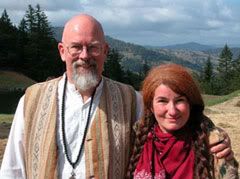Penukonda and Sri Kaleshwar
 "A young man will come - at the turn of this millenium - with a special relationship to Mother Divine. He will live by the holy mountain in Penukonda. The Mother, Adishakti Parashakti, will receive his worship and answer his prayers. He will be an incarnation of love who will bring Her energy to the world. He will come to take care of the planet and bring extraordinary knowledge and light. To see him once will be a blessing for a person's whole lifetime. If you have faith in him, you will automatically receive the shakti from him. He will spread the supernatural power channels to every soul who is interested, and will bring Jivamukti to the world."
"A young man will come - at the turn of this millenium - with a special relationship to Mother Divine. He will live by the holy mountain in Penukonda. The Mother, Adishakti Parashakti, will receive his worship and answer his prayers. He will be an incarnation of love who will bring Her energy to the world. He will come to take care of the planet and bring extraordinary knowledge and light. To see him once will be a blessing for a person's whole lifetime. If you have faith in him, you will automatically receive the shakti from him. He will spread the supernatural power channels to every soul who is interested, and will bring Jivamukti to the world."This prophecy of Sri Kaleshwar's coming to Penukonda and his divine activities to bless the world was written by the sage Vibrahmhendra over 400 years ago in a palm leaf book called The Kalayana. The Kalayana accurately predicted events in India and throughout the world. It is held as a national treasure of India and only parts of it have been released to the public.
From the time of his birth in 1973, in a small village in Andhra Pradesh, Sri Kaleshwar was an unusual child and was often misunderstood by his parents. For the first seven years of his life, he didn't talk and often survived on only a drop of water. He has said that he was absorbing energy from the cosmos. Although his strange behavior worried his parents, saints would come to his home and tell his parents that their child had a great spiritual destiny.
When Kaleshwar was 14 years old, while studying in an abandoned temple, Shirdi Sai Baba, who had left the body in 1918, appeared before Kaleshwar in the physical and transformed a bowl of rotten food into a delicious meal. Kaleshwar had been Shirdi Sai Baba's disciple in many past lives and on that day Shirdi Baba was returning to awaken his student's divine energy channels. Kaleshwar refers to this pivotal day in his life as his "enlightenment day." Afterwards, the miraculous powers that he had developed in his past live's started to return and Kaleshwar began to heal people. His world mission to heal the world began to manifest.
 Guided by Shirdi Sai Baba, Kaleshwar discovered in ancient palm leaf sacred texts specific sadhanas (spiritual practices), coming from Mother Divine and the angels, that had been recorded by the great maharishes. Kaleshwar entered into a period of intense research, practicing these powerful sadhanas and consulting with hundreds of saints throughout India. This was done to test the practices that he would later give his students, not to attain enlightenment for himself, as his abilities gained in past lives had already returned. Kaleshwar was testing the "sacred formulas" involving how to use mantras and yantras that the ancient sages had recorded in the palm leaf books in order to validate their effectiveness for his future students. The purpose of these practices is to awaken the infinite capacity of the soul and to open the channels to Mother Divine so that one can bless the world with Divine energy.
Guided by Shirdi Sai Baba, Kaleshwar discovered in ancient palm leaf sacred texts specific sadhanas (spiritual practices), coming from Mother Divine and the angels, that had been recorded by the great maharishes. Kaleshwar entered into a period of intense research, practicing these powerful sadhanas and consulting with hundreds of saints throughout India. This was done to test the practices that he would later give his students, not to attain enlightenment for himself, as his abilities gained in past lives had already returned. Kaleshwar was testing the "sacred formulas" involving how to use mantras and yantras that the ancient sages had recorded in the palm leaf books in order to validate their effectiveness for his future students. The purpose of these practices is to awaken the infinite capacity of the soul and to open the channels to Mother Divine so that one can bless the world with Divine energy.Kaleshwar's mission is to revive this ancient knowledge and to create masters with miraculous abilities who can use this miracle energy to heal the world. He feels that, because the world is in such dire need of this divine knowledge, it would be a spiritual crime to keep it secret. He wants everyone to be able to directly experience the Divine and smell the fragrance of God.
Sri Kaleshwar created his ashram in Penukonda, a sacred power spot where the saint-king Krishnadevaraya established his fort and palace. Krishnadevaraya ruled all of south India and at that time was the wealthiest king in the world. He also built the palace and temples at Hampi, which are a national treasure of India. Krishnadevaraya's life was transformed by a brahman priest, named Tenali Ramakrishna, who taught the king how to open his channels to Mother Divine. After this, Krishnadevaraya built 365 temples, including some of the most famous temples in India, like the Temple of Lord Balaji (Vishnu) at Tirupti which is currently visited by eight million people a year.

Today the small town of Penukonda has streets where cows and goats roam free. As you enter the town you pass through the tall stone walls that encircled Krishnadevaraya's fort. In the center of town is the gate that was the entrance to his fort.
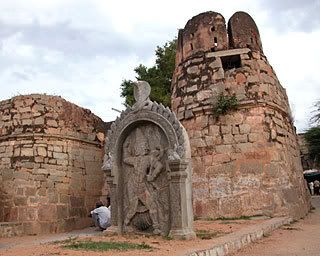
Nearby is a statue of Krishnadevaraya on his horse.
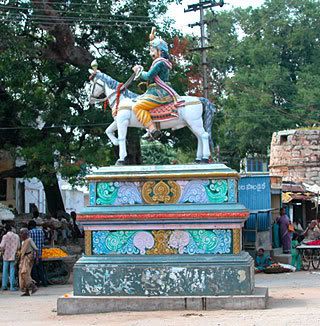
Penukonda sits at the foot of a sacred mountain that is a place of natural high divine energy. During Krishnadevaraya's time, thousands of saints and sages gathered there to share wisdom and meditate in huge caves within the mountain. Many attained mahasamadhi there. The mountain emanates very powerful and transforming energies that facilitate spiritual practice.
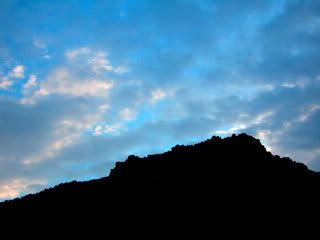
Throughout the ages, many great saints and sages came to Penukonda. Today, many temples can be seen along the mountain ridges and at the top of the mountain there exists the ruins of a temple to Mother Divine.
Kaleshwar built his ashram directly on top of Krishnadevaraya's fort. The entire ashram is surrounded by holy sites. Penukonda mountain looms above the ashram on the west with all it's ancient temples and caves.
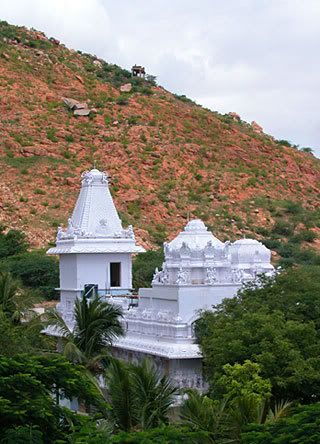
On the north edge of the ashram are the ruins of Krishnadevaraya's palace.
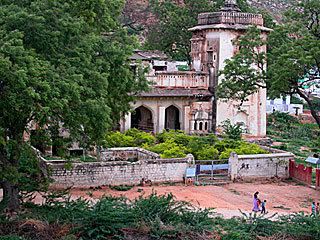
To the east of the ashram rises the tower of the Gopurum, which was the main entrance to Krishnadevaraya's temple.
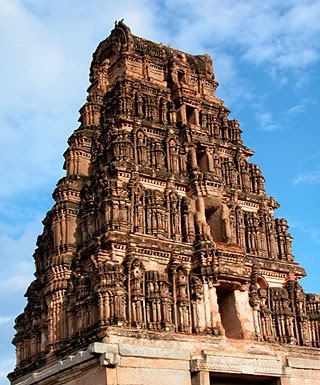
To the south of the ashram, a steep mountain rises that in ancient times was frequented by very high Divine Souls. On top of the mountain there are ruins of a large Mandir (temple) and it is said that many Divine Souls frequented this mountain.

Sri Kaleshwar has built his ashram according to the priciples of Vaastu, the ancient science of building in harmony with the forces of nature. When he first began his ashram, Kaleshwar lived in a small open-air thatched roof hut that he was allowed to build by the landlord who respected him because of his healing abilities. Soon his reputation began to spread and people began coming from a far to meet him and receive his blessings.
Kaleshwar's mission is to create masters not students. To this end he is working with relatively small numbers of people from around the world, although his miracle powers are so dramatic that he could easily attract millions. He sometimes performs these miracles in small groups, not to attract fame but to increase certain individuals spiritual faith and inspiration. As Jesus said, "Unless they see signs and wonders, they will not believe," and "I tell you the truth, anyone who has faith in me will do what I have been doing. He will do even greater things than these."
Each master has a unique mission. Some have millions of students. Some live high in the Himalayas and have very few, or no students. Kaleshwar, rather than being a master of the masses, is working intensively with smaller groups to create masters, Soul Scientists, who will go out into the world to heal people's souls. Kaleshwar says that nearly everyone in the world suffers from heartbreak. Heartbreak takes many forms. It can be the romantic heartbreak of being disappointed in love. It can be the heartbreak of losing a loved one. It can be the heartbreak of losing one's spiritual teacher or the heartbreak of having practiced spiritual disciplines for 30 years with no or little results. It can even be the heartbreak of living in a world where injustice, poverty, disease and violence result in the daily suffering of billions of people.
 Kaleshwar says that the knowledge he's bringing to the world is not his knowledge. It's the spiritual wisdom of soul development recorded by the ancient sages of India and preserved for the world. He is not teaching a religion either. His religion is the religion of love. He says, "Religions are different, languages are different, but the language of the heart is the same. My language is the language of the heart. God has only one organization and that's love. I'm going to that point, only there. The love oranization - the religion of love."
Kaleshwar says that the knowledge he's bringing to the world is not his knowledge. It's the spiritual wisdom of soul development recorded by the ancient sages of India and preserved for the world. He is not teaching a religion either. His religion is the religion of love. He says, "Religions are different, languages are different, but the language of the heart is the same. My language is the language of the heart. God has only one organization and that's love. I'm going to that point, only there. The love oranization - the religion of love."

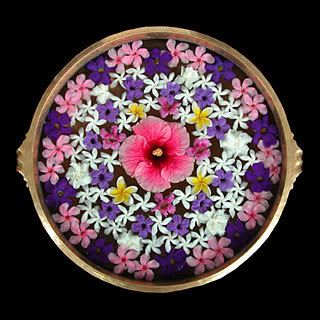
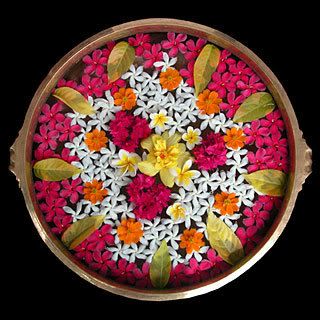
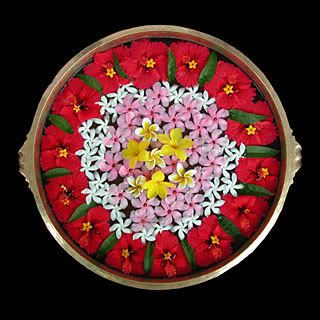
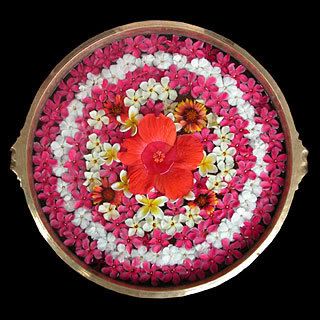
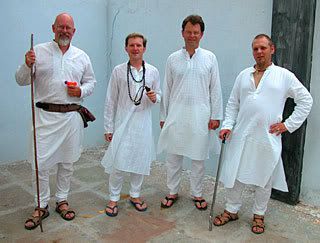
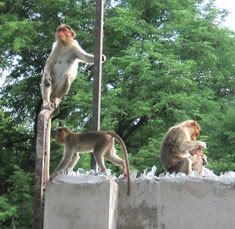

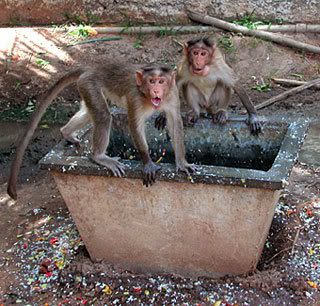

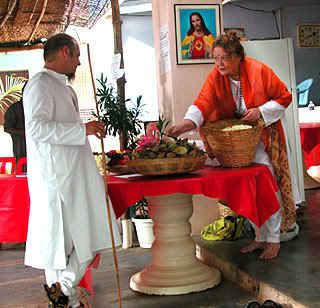
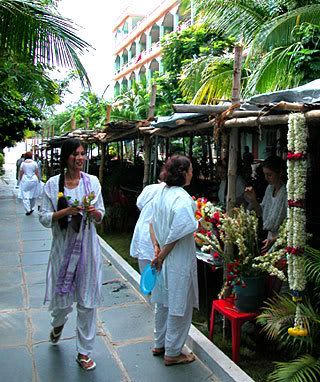
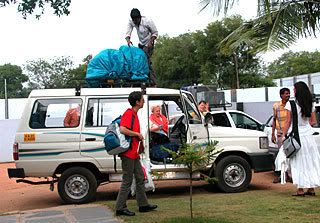

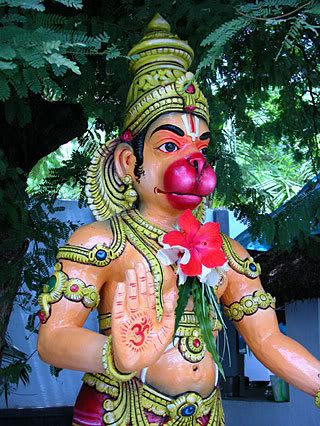
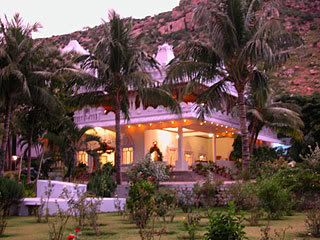
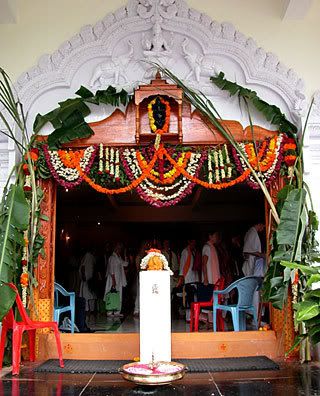

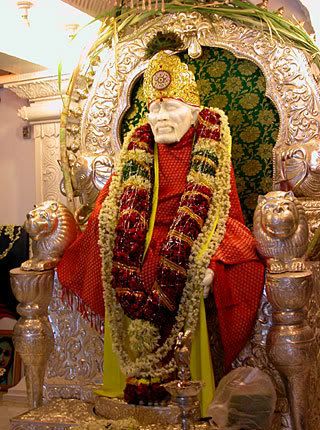
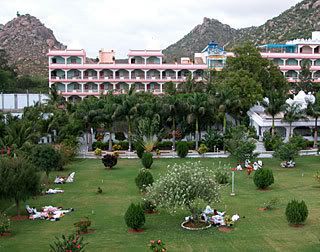
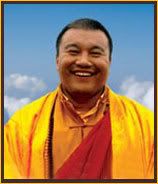 I remembered how when Tara and I traveled for two years with Dzogchen Khenpo Choga Rinpoche as his attendants, he demonstated through his daily life perfect dedication and total commitment to assisting all sentient beings. During all the time that we were with Khenpo Choga, which was pretty much 24 hours a day for nearly two years, I never asked him a single Dharma question. I didn't have to. He was the living Dharma. To be with him was to experience the Ways of the Bodhisattva and to learn first-hand how to use every moment to assist others. When he became sick from over-exertion, he wouldn't stop touring and teaching, saying "If I die tomorrow, at least I teach today." We watched him sit teaching with sweat dripping down his face and blood seeping through his robes and were in awe of how deep his commitment was. When finally he was close to death, I prostrated before him with tears streaming down my face and begged him to take a break to rest and recuperate. That was one of the moments of my life that I'll never forget. To serve a true Boddhisattva like Dzogchen Khenpo Choga Rinpoche was an opprtunity that to this day I don't know how I deserved.
I remembered how when Tara and I traveled for two years with Dzogchen Khenpo Choga Rinpoche as his attendants, he demonstated through his daily life perfect dedication and total commitment to assisting all sentient beings. During all the time that we were with Khenpo Choga, which was pretty much 24 hours a day for nearly two years, I never asked him a single Dharma question. I didn't have to. He was the living Dharma. To be with him was to experience the Ways of the Bodhisattva and to learn first-hand how to use every moment to assist others. When he became sick from over-exertion, he wouldn't stop touring and teaching, saying "If I die tomorrow, at least I teach today." We watched him sit teaching with sweat dripping down his face and blood seeping through his robes and were in awe of how deep his commitment was. When finally he was close to death, I prostrated before him with tears streaming down my face and begged him to take a break to rest and recuperate. That was one of the moments of my life that I'll never forget. To serve a true Boddhisattva like Dzogchen Khenpo Choga Rinpoche was an opprtunity that to this day I don't know how I deserved.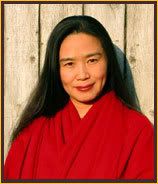 I remembered how, when we were burnt out from exhaustion, Yuan Miao had taken us under her motherly wing and showered us with her unconditional love. She healed us, allowed us to live with her and blessed us with the Divine Mother's love. She showed us a way to assist people through a universal spirituality that knows no boundaries. The first day that I met Yuan Miao, I asked her whether she taught Mahayana or Vajrayana Buddhism. She looked at me with eyes full of infinite love and said, "I teach the essence of Vajrayana but it's the essence of all religions. What I teach is Universal. If you have true compassion, you want to help everyone."
I remembered how, when we were burnt out from exhaustion, Yuan Miao had taken us under her motherly wing and showered us with her unconditional love. She healed us, allowed us to live with her and blessed us with the Divine Mother's love. She showed us a way to assist people through a universal spirituality that knows no boundaries. The first day that I met Yuan Miao, I asked her whether she taught Mahayana or Vajrayana Buddhism. She looked at me with eyes full of infinite love and said, "I teach the essence of Vajrayana but it's the essence of all religions. What I teach is Universal. If you have true compassion, you want to help everyone."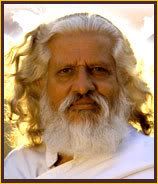 Yuan Miao had always told us that when you experience God, no mater what form you see God as, it's always in the central channel. So, when she sent us out into the world to teach, saying "You have guru karma that you must fulfill, we felt that Kriya yoga, the spiritual science of purifying the central channel, was something we needed to learn. Miraculously, we were quickly guided to Yogiraj Gurunath Siddhanath. I fondly remember our time with Yogiraj and how he fully expresses the life of the Nath Yogis. He isn't merely a teacher. He's a true Master who shakes and wakes you. His dynanism and irrepressable joy are proof that the ancient tradition and practices of Babaji's Kriya Yoga are alive and flourishing in the modern world.
Yuan Miao had always told us that when you experience God, no mater what form you see God as, it's always in the central channel. So, when she sent us out into the world to teach, saying "You have guru karma that you must fulfill, we felt that Kriya yoga, the spiritual science of purifying the central channel, was something we needed to learn. Miraculously, we were quickly guided to Yogiraj Gurunath Siddhanath. I fondly remember our time with Yogiraj and how he fully expresses the life of the Nath Yogis. He isn't merely a teacher. He's a true Master who shakes and wakes you. His dynanism and irrepressable joy are proof that the ancient tradition and practices of Babaji's Kriya Yoga are alive and flourishing in the modern world.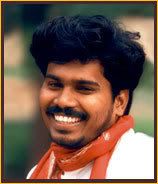 Now, our souls have guided us to study with the miracle saint and Siddha master Sri Sai Kaleshwar. Our hearts have opened to him as they did with all our previous teachers. I see this as the natural progression of all that we've learned and done before. Sri Kaleshwar's mission is to create masters not students. His religion is the religion of Love. What we've come here to learn is not different from what we've learned before but is rather its fulfillment. All the teachers that we've been so blessed to be with and learn from have contributed a piece of the puzzle of life. To each one we offer our deepest gratitude and undying love. As Khenpo Choga said when we asked for his blessings to study with Yuan Miao, "When you meet another Buddha that you love you don't stop loving the one before."
Now, our souls have guided us to study with the miracle saint and Siddha master Sri Sai Kaleshwar. Our hearts have opened to him as they did with all our previous teachers. I see this as the natural progression of all that we've learned and done before. Sri Kaleshwar's mission is to create masters not students. His religion is the religion of Love. What we've come here to learn is not different from what we've learned before but is rather its fulfillment. All the teachers that we've been so blessed to be with and learn from have contributed a piece of the puzzle of life. To each one we offer our deepest gratitude and undying love. As Khenpo Choga said when we asked for his blessings to study with Yuan Miao, "When you meet another Buddha that you love you don't stop loving the one before."
